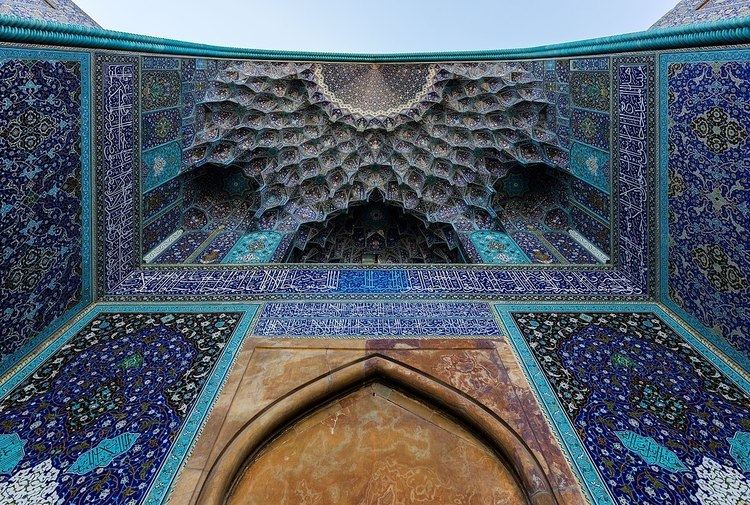 | ||
Muqarnas (Arabic: مقرنص; Persian: مقرنس) is a form of architectural ornamented vaulting, the "geometric subdivision of a squinch, or cupola, or corbel, into a large number of miniature squinches, producing a sort of cellular structure", sometimes also called a "honeycomb" vault. It is used for domes, and especially half-domes in entrances, iwans and apses, mostly in traditional Islamic and Persian architecture. Where some elements project downwards, the style may be called mocárabe; these are reminiscent of stalactites, and are sometimes called "stalactite vaults".
Muqarnas developed around the middle of the 10th century in northeastern Iran and almost simultaneously — but apparently independently — in North Africa. Examples can be found across Morocco and by extension, the Alhambra in Granada, Spain, the Abbasid Palace in Baghdad, Iraq, and the mausoleum of Sultan Qaitbay, Cairo, Egypt. Large rectangular roofs in wood with muqarnas-style decoration adorn the 12th century Cappella Palatina in Palermo, Sicily, and other important buildings in Norman Sicily. Muqarnas is also found in Armenian architecture.
Structure
Muqarnas is typically applied to the undersides of domes, pendentives, cornices, squinches, arches and vaults. Muqarnas is a downward-facing shape; that is, a vertical line can be traced from the floor to any point on a muqarnas surface. It is also arranged in horizontal courses, as in a corbelled vault, with the horizontal joint surface having a different shape at each level. The edges of these surfaces can all be traced on a single plan view; architects can thus plan out muqarnas geometrically, as the image illustrates. See these diagrams for clarity.
Muqarnas does not have a significant structural role. Muqarnas need not be carved into the structural blocks of a corbelled vault; it can be hung from a structural roof as a purely decorative surface. Muqarnas may be made of brick, stone, stucco, or wood, and clad with tiles or plaster. The individual cells may be called alveoles.
Some modern muqarnas elements have been designed, if not built, with upwards-facing cells; see also the Indian capitals above.
